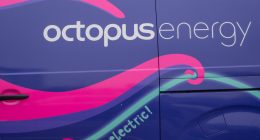You invested in countless coffee meetups and introduction calls to referrals and finally landed your first client. You’ve negotiated your contract, and it’s signed. Now starts a vital part of your business: Client onboarding.
Nailing the client onboarding process lays the foundation for a profitable and productive partnership. However, ignoring the importance of client onboarding might lead to increased churn, less trust, and eventually losing clients altogether.
Whether you are a freelancer, a digital agency, a business consultancy, or a client-focused business, your onboarding process matters.
In the following steps, I will show you the importance of client onboarding and offer you five actionable steps to implement into your process.
What is client onboarding?
First, let’s get straight on what exactly client onboarding entails. Let’s take a moment to think about people you have hired in the past.
You recently reached out to an accountant to help you navigate tax season or got in contact with a print vendor for an important client project. How was their first interaction with you? Were they practising open and honest communication and sharing their way of working with you? Did they take the time to answer all your questions? After signing the contract, did they check in with you to ask if you were happy with their services or needed any assistance?
Considering the above questions, would you hire them again or refer their services to others?
Your approach to introducing a new client to your business is directly proportional to your long-term success. Seeing you have invested in an intuitive system to navigate a project’s process will increase their trust in you.
Why it is important to onboard new clients?
While most creatives are eager to dive straight into the creative work after signing the contract, this approach makes you skip vital steps for building trust between you and your clients. When the client signs your agreement, you have 90 days to prove your worth and demonstrate your value early in the project journey to make them stick. Implementing a bulletproof client onboarding process is the best way to go about this.
Investing time in such an early stage of the project also allows you to get to know your client and their business on a deeper level, discovering the real problem they are facing and finding ways to increase efficiency and avoid bottlenecks down the line.

More importantly, it is the right moment for both parties to find out if it’s a good fit, and it provides a structure for optimization in the future. So going above and beyond at this point is necessary to develop a relationship that will last far beyond a single project.
A 5-step process to onboard new clients effectively
Before we get into the five-step process, review the number of steps you currently have to eliminate unnecessary ones and maximize the effectiveness of your client onboarding. You can make your future processes more efficient and save time by creating templates you can refer to each time you bring on a new client. Let’s dive in:

1.Contract, proposal, invoice
The proposal is approved, and you and your client decide to work together. Now it’s time to create and send a contract to sign off, get your payment, and officially start working together.
Plenty of online services can help you create proven contracts, but make sure the terms of the agreement are clearly defined as well as the scope, deliverables, point of contact, budget and timelines. Send this over to your client and make sure it is signed off.
Next, send your invoice reflecting what you agree upon in the proposal. If the client gets back to you with adjustments, make sure it’s also adjusted in the invoice. Once the client made their first payment – typically 50% – double check if they received a confirmation of that payment.
2.Welcome Package with (Email Template)
Once the payment is made, ensure your client feels welcome and valued as a part of this new partnership. A simple way to do this is to send a big welcome email. A big plus is adding a welcome package to this email, where the client can find more details about your expertise, your way of working, and what they can expect in the following stages of the project.
You can also automate this step with an email template that matches your project scope, but make sure to adjust to each client and project continuously. Here’s an example email:
Dear [Client],
Welcome to [Agency]! We are so excited to have you on board. [Agency] is a market leader in your industry, and we are excited to work with you to help you get the most out of our partnership and achieve your business goals.
Please review the Welcome Package I have put together, especially for you to get started. This package contains essential information about our Agency, our services, what to expect from us in the following stages of our project together, and what we expect from you to create magic together. As a starter, we’d love to plan a kick-off meeting on [date]
Please confirm if that timing suits you, and if you have any questions or need assistance, please do not hesitate to contact me at [email address]. I am here to help you succeed!
Thank you for choosing [Agency]!
Sincerely,
[Your name]
[Your title]
Creating a welcome package will help reinforce they did the right thing by hiring you and set the right expectations for onboarding.
3.Onboarding Questionnaire & Kick-off
As soon as the client confirms the kick-off meeting, it’s time to set up a framework for all the information needed to set up the creative brief – a necessary document for your team to align with all the project’s data and start doing their magic.
Either build a questionnaire upfront and send it over to the client as” homework” or fill in the blanks together during the kick-off. Again, you can work more efficiently and save time with a proven framework or questionnaire template that you can adjust to each project and client and is available online, so each team member has access 24/7.
The goal of the kick-off meeting is to get your client comfortable and talking to get the heart of their WHY. Ask detailed questions about the business and industry, understand goals and long-term vision, learn about their customers, and get the first insight into the potential outcome of the project. Thanks to your pre-build framework, you have a valuable guideline, and your client can go down tangents that lead to moments of insight. Plus, seeing your client’s engagement motivates you to create fruitful outcomes.
4.Post-Kickoff
After the kick-off meeting, it’s time to create the final creative brief. Adjust and shape it in-house to best represent what has been discussed. A detailed timeline based on target end dates is added, and the final document is sent off to the entire team and the client to ensure all information is accurate.
Use this creative brief as your project bible throughout the project regarding assets, timelines, goals, and the client’s definition of success. A document that lays out the project’s core aspect will help ensure everyone is on the same page from the beginning.
5.Next steps
You finally kicked off your new client project successfully! But your client interaction continues beyond there. Set up a short call about a week later to follow up and ensure they don’t have any remaining questions. During this call, schedule future status calls and presentations. Because the more you interact with your client, the more likely you will be able to assess any concerns before they become a big issue!
Use a proven client onboarding template
Creating an efficient onboarding framework and a thorough, creative brief takes time, collaboration, and effort. Thanks to HolaBrief’s years of research with 1000s of agencies, you now have proven brief templates at your disposal.

Building your onboarding questionnaire inside a living document using HolaBrief, this step becomes much more efficient. No excuses anymore for setting up creative briefs at your Agency.
With HolaBrief, you can go through each questionnaire section together, including overview questions, inspiring questions, a competitor analysis, a target audience creator, and much more. It’s a fun way to get your client’s team engaged around a very overwhelming phase. With HolaBrief, you can easily streamline kick-off meetings and build thorough, creative briefs that instill trust in your clients to commit to more extended partnerships. Try it out for free!
Each department can add, comment or edit parts of the brief (at the same time) before it’s used as a blueprint or sent over for review to the client. They don’t even have to create an account in HolaBrief, so getting input from your clients has never been easier.









